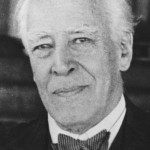 Constantin Stanislavski in the first of his acting trilogy An Actor Prepares (Routledge, translated by Elizabeth Reynolds Hapgood) calls it “Communion.” To Stanislavski “it is possible to look at and to see or to look at and not to see.” Id. at 212. On stage the actor can see and feel everything that is going on, or the actor can be some place beyond the auditorium. The same holds true for a trial lawyer.
Constantin Stanislavski in the first of his acting trilogy An Actor Prepares (Routledge, translated by Elizabeth Reynolds Hapgood) calls it “Communion.” To Stanislavski “it is possible to look at and to see or to look at and not to see.” Id. at 212. On stage the actor can see and feel everything that is going on, or the actor can be some place beyond the auditorium. The same holds true for a trial lawyer.
The Eye is the Mirror of the Soul. Stanislavski teaches for sincerity the eyes must look and reflect “the deep inner content of the soul.” Id. This means to effectively communicate at trial we must internalize and become identified with our cause before we enter the courtroom. We cannot give ourself wholly to our cause until we internalize it and are transformed. This allows us to become one with the jury and our witnesses. To fail to internalize our cause leads to a mechanical presentation that lacks sincerity with a resulting failure of communication with witnesses and jury.
Lawyer and Witness. Stanislavski says a quality playwright presents actors who convey an “inner-communication.” We must do the same with our witnesses. Stanislavski would have the witness take the stand to share her feelings and thoughts with the jury while the lawyer takes in the feelings and thoughts. “When [the jury] is present during such an emotional and intellectual change, [they are] like a witness to a conversation. [The jury] has a silent part in the exchange of feelings, and is excited by their experience.” Id. at 213-14. This only occurs when witness and lawyer “make every effort to maintain an uninterrupted exchange of feelings, thoughts and actions among themselves.” Id. at 214.
Self-Communion. Before we can communicate at an emotional and intellectual level we must first engage in self-communion. Self-communion occurs when we get in touch with our inner life energy. The Hindus call this our Prana. The Chinese call this our Chi. According to Stanislavski “in addition to our brain … the nerve and psychic center of our being, we have a similar source near the heart, in the solar plexus.” Id. at 215. We must establish a connection between these two energy centers. The cerebral center is the seat of our conscious (rational) mind and the solar plexus is the seat of our subconscious (emotions). When we make the connection our brain “holds intercourse” with our feelings. When we are at this level in trial we are able to commune with our self “audibly or in silence…with perfect self -possession.” Id. at 217.
Communion with Witness. Stanislavski explains actors have lines. A mechanical actor memorizes her lines, waits until the other actor finishes and then says her next line. We can easily slip into this habit concentrating only on our prepared questions that automatically follow after the witness answers. To be in communion with the witness we must engage in an “unbroken flow” with the witness. After asking the question follow the answer so your thoughts penetrate the consciousness of the witness. Here we need to listen, internalize, and add with our eyes what can not be put into words, but shows in our soul there is communion. Then we ask our next question. This connection which requires “concentrated attention, technique, and artistic discipline,” continues through the examination.
Post Footer automatically generated by Add Post Footer Plugin for wordpress.


Really enjoyed this article post. Thanks Again. Cool.
Hey, cool article. Thank you for sharing your knowledge. I have found significant information on your site. And for all those who have been reading this article, I would like to say bookmark this site. It worth future visits for the class of the data, cheers… 🙂
[…] Price: $ 10.95 For more on this read: https://zenlawyerseattle.com/truthfulfeelings/stanislavski-and-communication-at-trial/ […]
i’d love to share this posting with the readers on my site. thanks for sharing!
Nice article! It was a pleasure to read it 🙂